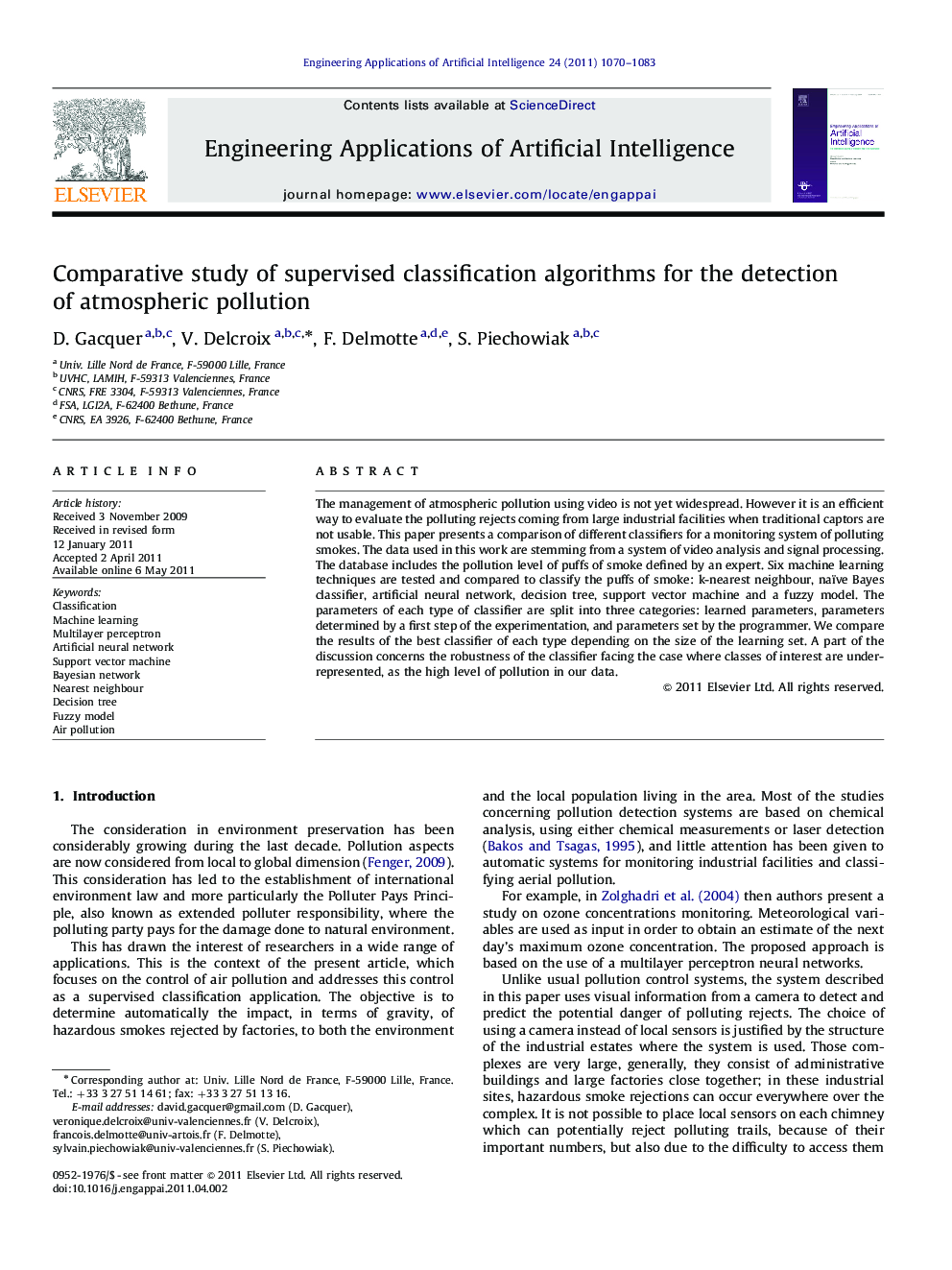| Article ID | Journal | Published Year | Pages | File Type |
|---|---|---|---|---|
| 381338 | Engineering Applications of Artificial Intelligence | 2011 | 14 Pages |
The management of atmospheric pollution using video is not yet widespread. However it is an efficient way to evaluate the polluting rejects coming from large industrial facilities when traditional captors are not usable. This paper presents a comparison of different classifiers for a monitoring system of polluting smokes. The data used in this work are stemming from a system of video analysis and signal processing. The database includes the pollution level of puffs of smoke defined by an expert. Six machine learning techniques are tested and compared to classify the puffs of smoke: k-nearest neighbour, naïve Bayes classifier, artificial neural network, decision tree, support vector machine and a fuzzy model. The parameters of each type of classifier are split into three categories: learned parameters, parameters determined by a first step of the experimentation, and parameters set by the programmer. We compare the results of the best classifier of each type depending on the size of the learning set. A part of the discussion concerns the robustness of the classifier facing the case where classes of interest are under-represented, as the high level of pollution in our data.
